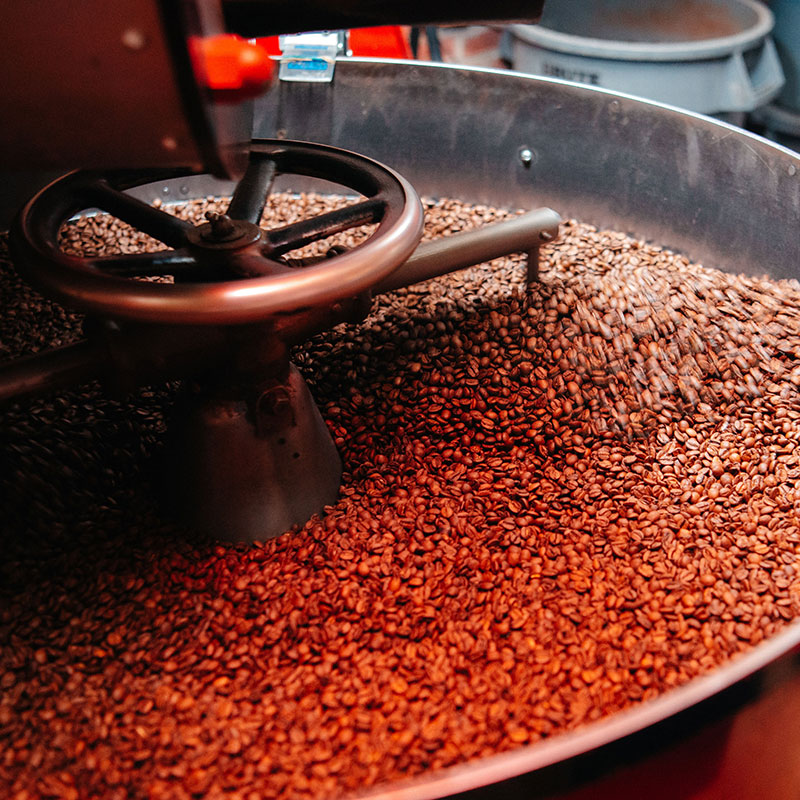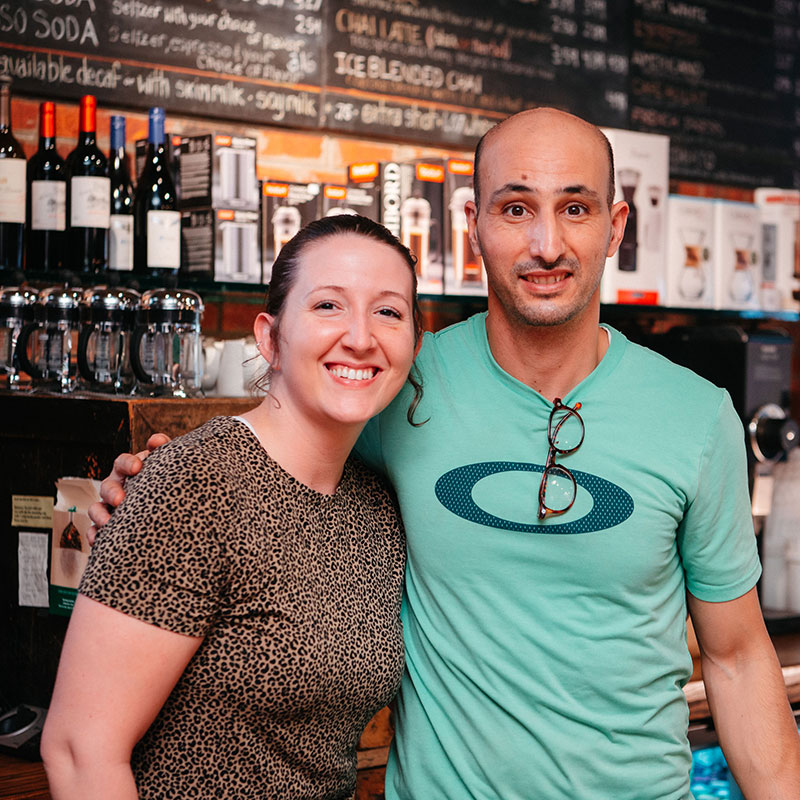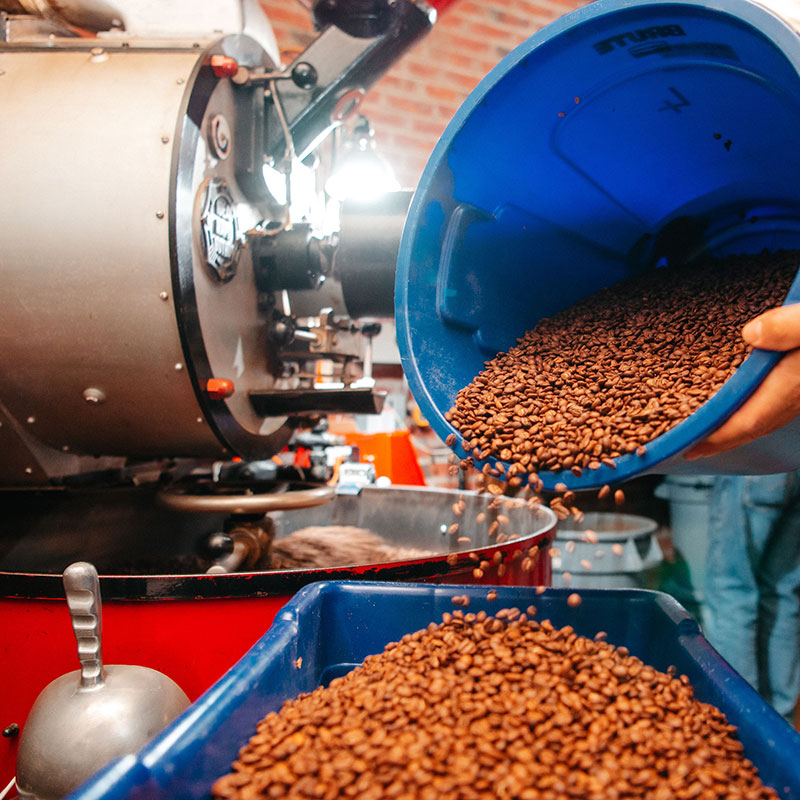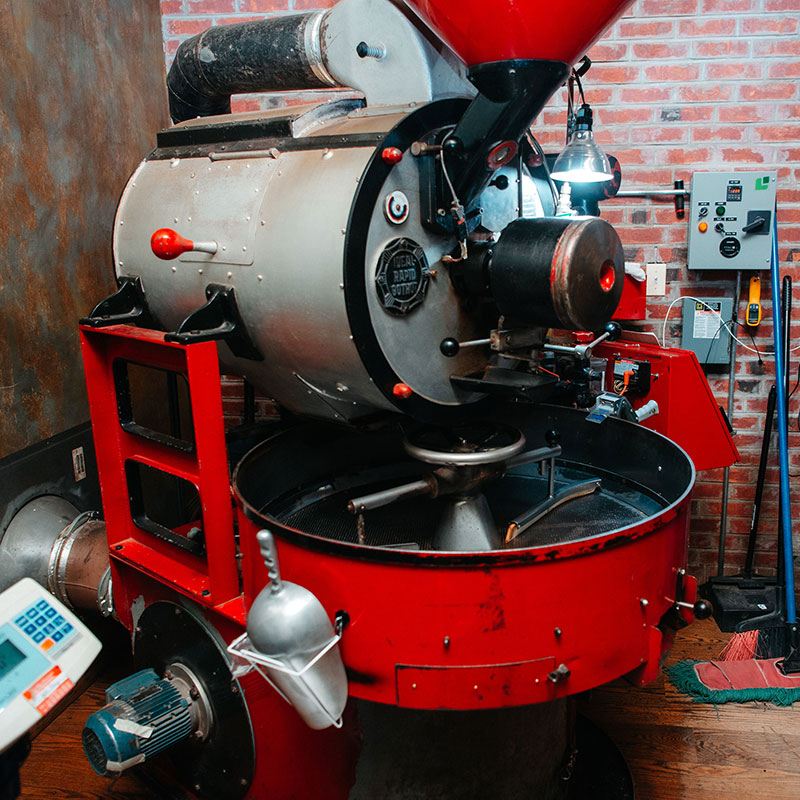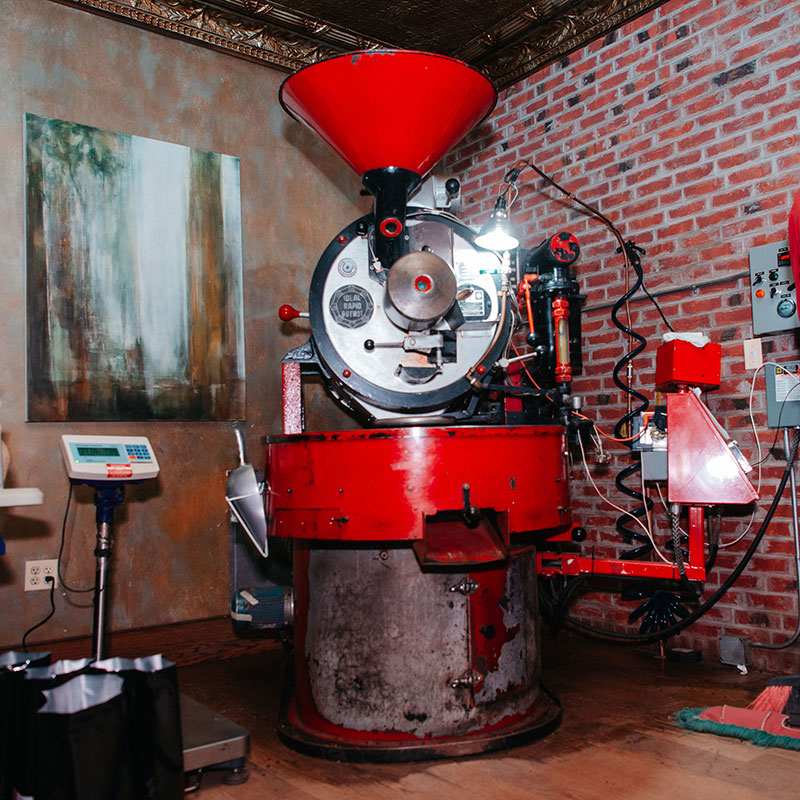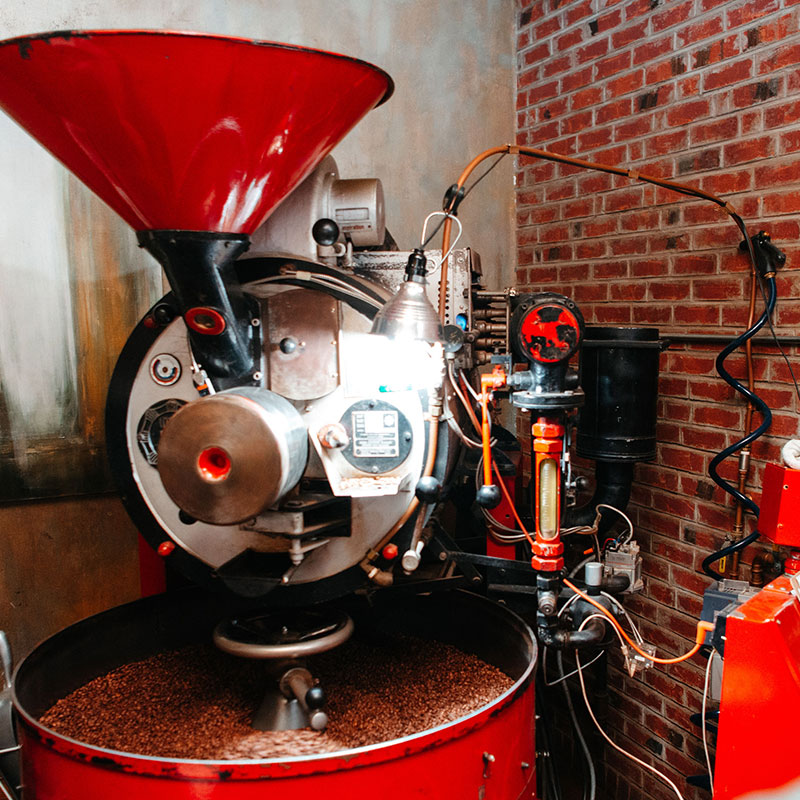HOW WE ROAST OUR BEANS
Roasting coffee is an age-old craft that we’re thrilled to be a part of. Here, we begin by weighing raw green coffee which we drop into an elevated hopper at the top of the Gothot. Once the internal drum temperatures are correct we drop the beans into the drum and the process begins.
Coffee roasting can be influenced in many ways: Ambient temperatures, drum temperatures, the weight of the green coffee as well as the bean’s moisture content. Once the beans are in the drum we monitor and tweak drum temps in order to speed up or slow down roast depending on what qualities in the beans we’re looking to emphasize.
The beans go through a number of stages including an extended phase (Malliard Reaction) where the beans go from green to tan to brown, inducing changes to the beans sugars, amino acids and carbohydrates – which translates into aroma, flavor and sweetness.
First Crack, where beans rapidly expand to approximately twice their original size (with an audible ‘crack!’ in the roaster), signals the beginning of the development phase. The length and speed of the development phase influences the ultimate taste of the finished bean, with roast levels anywhere from light to medium to the darkest of all our roasts – French Roast.
Once our goals in the development phase have been hit, we drop the beans into the cooling tray for rapid cooling, stopping the internal roast process as quickly as possible. Once cooled we re-weigh the roasted coffee to make sure we’ve nailed the finished roast then look to ‘cup’ the beans in the next 24 hours for the ultimate final sensory test, focusing on flavor, aromatics, acidity, sweetness, mouthfeel and anything else that might inform the remarkable finished character of our coffee.

